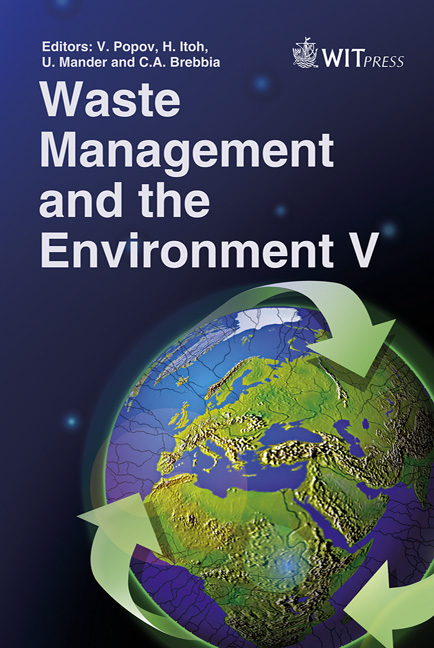Removal And Biodegradation Of Polycyclic Aromatic Hydrocarbons By Immobilized Microalgal Beads
Price
Free (open access)
Transaction
Volume
140
Pages
12
Page Range
391 - 402
Published
2010
Size
393 kb
Paper DOI
10.2495/WM100351
Copyright
WIT Press
Author(s)
N. F. Y. Tam, M. N. Chan & Y. S. Wong
Abstract
Polycyclic aromatic hydrocarbons (PAHs) are a class of toxic, carcinogenic and/or mutagenic organic compounds, which must be removed from contaminated environments such as wastewater. The present study aims to explore the potential of a fresh water green microalga, Selenastrum capricornutum, immobilized in alginate beads to remove mixed PAHs and determine the optimal density for an effective removal. Results demonstrated that the immobilized microalgal beads were effective in removing and biodegrading mixed PAHs at their dissolved concentrations, namely phenanthrene (PHE, 1 mg l-1), fluoranthene (FLA, 0.25 mg l-1) and pyrene (PYR, 0.1 mg l-1). These abilities were significantly affected by cell density, ranging from 2.5x105 to 5x106 cells bead-1. At the optimal cell density of 2.5x106 cells bead-1, 92% PHE and all FLA were removed in 168 hours, and it only took 24 hours to completely remove PYR. In 168-hour treatment, 73% PHE was biodegraded while FLA and PYR were completely degraded. The removal and biodegradation of PAHs were further enhanced by increasing the number of beads used and the optimal bead density was 20 beads ml-1 wastewater. These findings suggested that PAHs were quickly adsorbed onto cells and the alginate matrix, absorbed within cells and further degraded by live cells immobilized in alginate beads. Keywords: algae, alginate, persistent organic pollutant, PAHs, Selenastrum, wastewater treatment.
Keywords
algae, alginate, persistent organic pollutant, PAHs, Selenastrum, wastewater treatment





